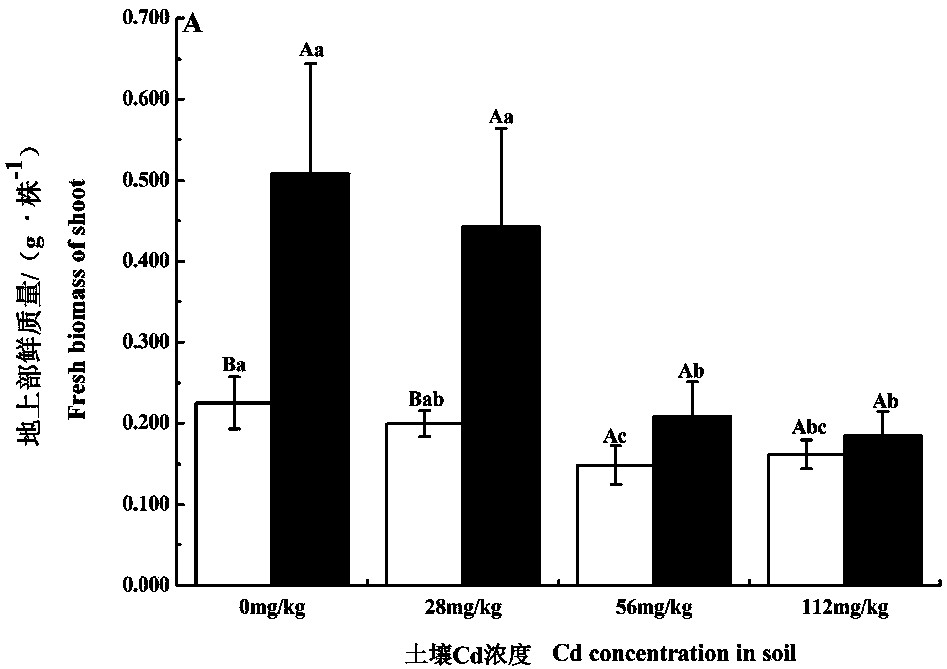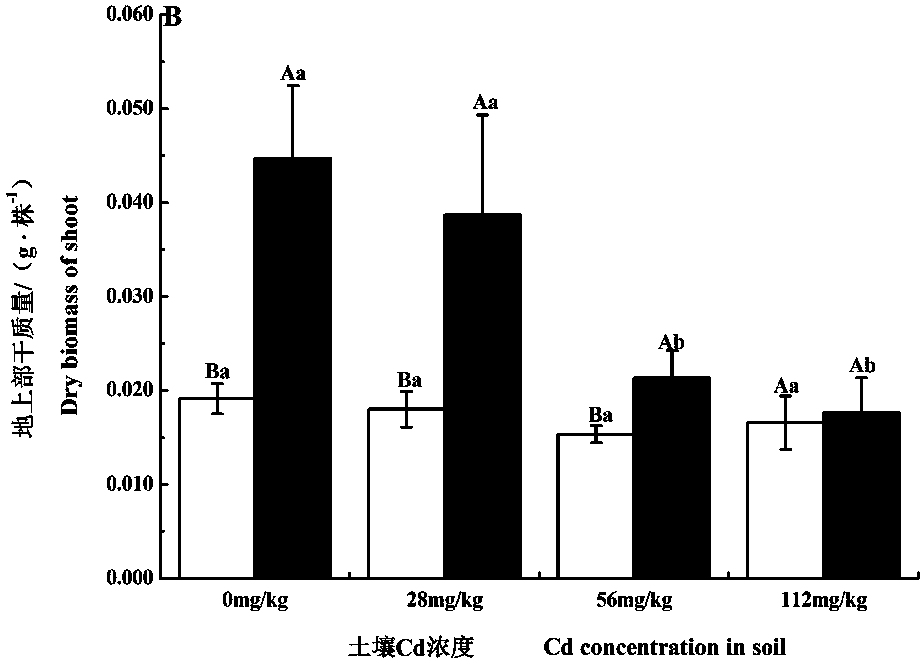Method for restoring cadmium pollution soil by combining aspergillous sydowii with brassica juncea
A technology of cadmium-contaminated soil and Aspergillus polymosa, which is applied in the field of microorganisms, can solve the problems of slow growth, affecting the repair of heavy metal-contaminated soil, and small biomass, so as to beautify the environment, not cause secondary pollution, and improve the extraction effect.
- Summary
- Abstract
- Description
- Claims
- Application Information
AI Technical Summary
Problems solved by technology
Method used
Image
Examples
Embodiment
[0045] The specific implementation steps are as follows:
[0046] (1) Add 0, 0.0856, 0.1713, 0.3425g of CdCl to the soil respectively 2 For solid powder, add water and stir until the soil metal Cd concentration is 0, 28, 56, and 112 mg / kg respectively. Set up 3 potted plants for each concentration, and finally take the average value to simulate Cd-contaminated soil;
[0047] (2) After the soil was stabilized, it was sterilized at 121°C for 20 minutes, and after cooling, it was filled into pots. Each pot was filled with 1.5 kg of Cd-contaminated soil, and 6 pots were set for each concentration as the inoculation group and the control group, a total of 24 pots;
[0048] (3) In the inoculation group and the control group, adopt direct seeding mode to sow Indian mustard seeds respectively, 8 seeds are sown in every pot, and 1 week after the seeds germinate, carry out thinning, and keep 5 well-growing seedlings in every pot;
[0049] (4) The potted plants in the inoculation group ne...
PUM
 Login to View More
Login to View More Abstract
Description
Claims
Application Information
 Login to View More
Login to View More - Generate Ideas
- Intellectual Property
- Life Sciences
- Materials
- Tech Scout
- Unparalleled Data Quality
- Higher Quality Content
- 60% Fewer Hallucinations
Browse by: Latest US Patents, China's latest patents, Technical Efficacy Thesaurus, Application Domain, Technology Topic, Popular Technical Reports.
© 2025 PatSnap. All rights reserved.Legal|Privacy policy|Modern Slavery Act Transparency Statement|Sitemap|About US| Contact US: help@patsnap.com



